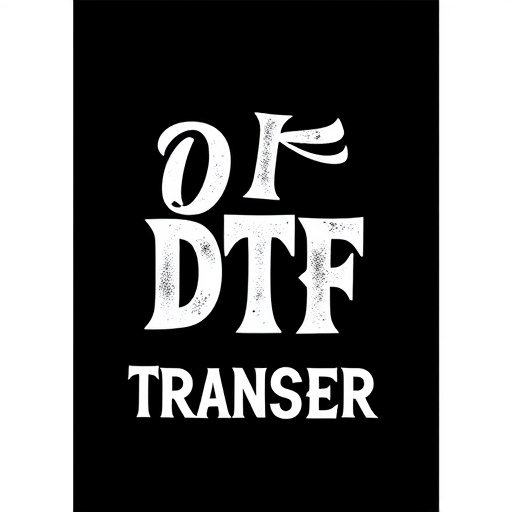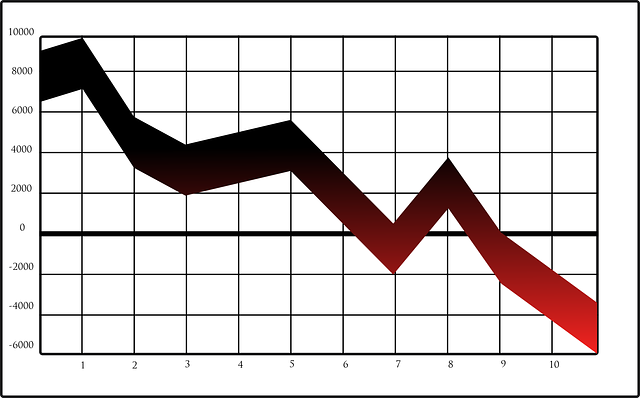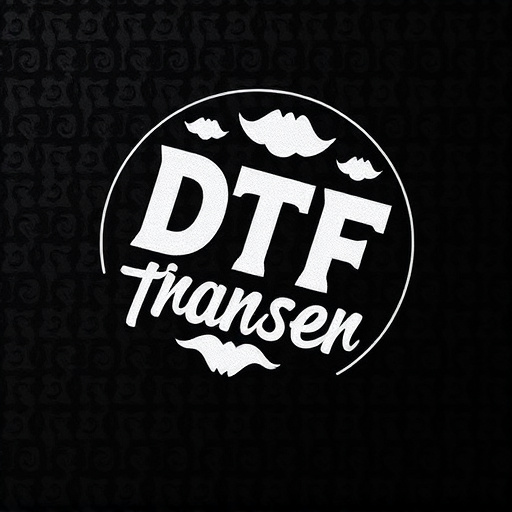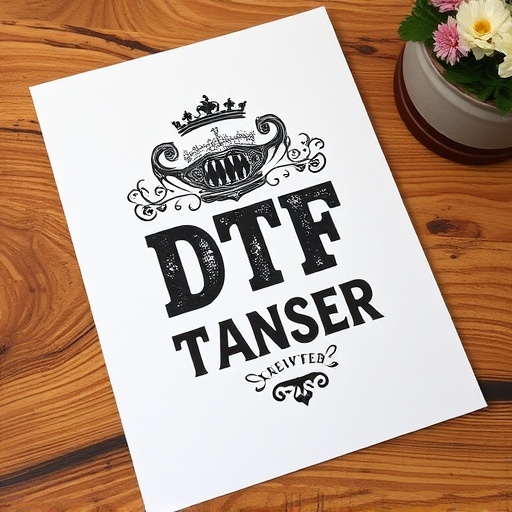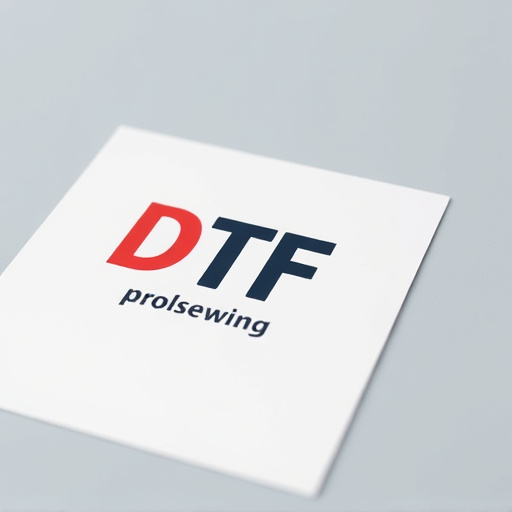DTF transfer is a groundbreaking method for printing on synthetic fabrics using heat and pressure to apply ink directly to fabric surfaces. This process offers exceptional versatility and quality, suitable for apparel and home textiles. Success depends on understanding fabric characteristics and compatibility with inks. Key factors include proper fabric preparation, choosing the right materials (like polyester, nylon), and applying compatible coatings/primers. Best practices involve thorough testing, pre-treating fabrics, and selecting specific DTF inks to achieve vibrant, long-lasting prints in synthetic fabric applications.
In today’s market, synthetic fabrics are a popular choice for their durability and versatility. However, achieving high-quality prints on these materials requires a deep understanding of compatibility, especially when employing DTF (Direct to Fabric) transfer technology. This article delves into the intricacies of DTF Transfer, exploring material compatibilities, common challenges, and best practices to ensure optimal results. By grasping these concepts, you’ll be equipped to navigate the landscape of synthetic fabric printing successfully.
- Understanding DTF Transfer: A Key Process for Synthetic Fabric Printing
- Material Compatibility: Essential Considerations for DTF Transfer Applications
- Common Synthetic Fabrics and Their Interaction with DTF Ink
- Factors Affecting Print Quality: A Deep Dive into Compatibility Issues
- Troubleshooting Common Compatibility Challenges in DTF Transfer
- Best Practices for Ensuring Optimal Compatibility in Your Projects
Understanding DTF Transfer: A Key Process for Synthetic Fabric Printing

Direct-to-fabric (DTF) transfer is a revolutionary process that has transformed synthetic fabric printing, offering unparalleled versatility and quality. This technique involves transferring ink directly onto the fabric’s surface using heat and pressure, eliminating the need for intermediate substrates. DTF Transfer is particularly advantageous for synthetic fabrics due to their durability and diverse applications, ranging from apparel to home textiles.
The process begins with preparing the fabric, ensuring it’s clean and free from contaminants. Then, a layer of transfer film, containing the design or image, is applied. Heat and pressure are subsequently used to fuse the ink onto the fabric, creating a vibrant, long-lasting print. DTF Transfer ensures that synthetic fabrics can showcase complex designs and intricate details, making it a preferred method for custom printing and bulk production alike.
Material Compatibility: Essential Considerations for DTF Transfer Applications

When it comes to DTF (Direct-To-Fabric) transfer applications, ensuring material compatibility is paramount for achieving optimal results. Different synthetic fabrics have varying properties that can impact how well they adhere to inks and withstand washing processes. For instance, polyesters are widely used in DTF transfers due to their durability and quick drying time, but they may require specific prep treatments to enhance ink absorption. On the other hand, nylon fabrics offer excellent stretch and flexibility, making them suitable for applications demanding movement-friendly garments, though they might demand higher heat settings during the transfer process.
Understanding the characteristics of your chosen synthetic fabric is crucial. Factors like porosity, fiber composition, and surface texture play significant roles in ink adhesion and long-term colorfastness. Manufacturers often provide guidelines for compatible fabrics and recommended preparation methods to ensure successful DTF transfers. Adhering to these specifications guarantees that your final products not only look vibrant but also maintain their quality through repeated wears and washes.
Common Synthetic Fabrics and Their Interaction with DTF Ink

In the realm of synthetic fabrics, several commonly used materials exhibit unique interactions with Direct-to-Fabric (DTF) ink, each offering distinct advantages and considerations for various applications. Polyester, for instance, is a widely adopted synthetic due to its durability and resistance to shrinking, making it ideal for DTF transfer processes. The smooth surface of polyester allows for optimal ink adhesion, ensuring vibrant and long-lasting prints. On the other hand, nylon fabrics present a different picture; while they offer exceptional strength and flexibility, their slightly rougher texture might require additional preparation to achieve perfect ink transfer. Proper surface treatment can enhance nylon’s compatibility with DTF inks, resulting in high-quality prints.
Another synthetic fabric, spandex, poses unique challenges due to its elastic nature. Spandex fabrics stretch and contract, which can impact the longevity of printed designs. However, when used appropriately, such as in apparel manufacturing, DTF inks can bond well to spandex, providing durable decorations without compromising the fabric’s stretchiness. Understanding these interactions is crucial for designers and manufacturers aiming to maximize the potential of synthetic fabrics in their projects, especially when employing DTF transfer techniques.
Factors Affecting Print Quality: A Deep Dive into Compatibility Issues

The quality of prints on synthetic fabrics is significantly influenced by several factors, with compatibility being a crucial one, especially when employing techniques like Direct to Fabric (DTF) Transfer. The fabric’s surface preparation plays a vital role; any imperfections or incorrect treatment can lead to poor ink adhesion and subsequently subpar print outcomes. In the case of DTF, ensuring the fabric is properly pre-treated, primed, and cleaned is essential to achieving high-resolution, vibrant prints.
Compatibility issues often arise from the interaction between the fabric’s material composition, surface chemistry, and the printing inks or solvents used. Different synthetic fabrics, such as polyester, nylon, or spandex, have distinct properties that can affect ink absorption and spread. For instance, highly hydrophobic materials may require specialized coatings or primers to enable effective ink bonding. In contrast, some fabrics might naturally repel inks, leading to inconsistent print results. Understanding these interactions is key to selecting the right printing methods and materials to ensure the desired print quality.
Troubleshooting Common Compatibility Challenges in DTF Transfer

Many users face compatibility challenges while applying Direct-To-Fabric (DTF) transfers, often due to the intricate nature of synthetic fabrics and their diverse compositions. One common issue is ink adhesion; ensuring the ink bonds well with the fabric’s surface is crucial for long-lasting prints. This problem can be attributed to various factors, including the fabric’s finish, porosity, and moisture content. To overcome this, pre-treatment of the fabric is essential; using suitable primers or coatings can prepare the surface, improving ink adhesion significantly.
Another frequent challenge involves selecting the right inks for specific synthetic fabrics. Different fabrics have varying levels of absorbency and pore size, which directly impact ink absorption. Using incompatible inks can result in poor prints with uneven colors or even ink bleeding. Therefore, understanding fabric properties and choosing inks designed for DTF transfers specifically is vital to avoid such compatibility issues.
Best Practices for Ensuring Optimal Compatibility in Your Projects

To ensure optimal compatibility and successful outcomes in your synthetic fabric applications, adopt best practices that center around thorough testing and preparation. Begin by selecting suitable materials for your DTF (Direct to Fabric) transfer process, ensuring they align with your fabric’s composition and intended use. This foundational step prevents potential issues like ink rejection or material degradation during printing.
Additionally, pre-treatment of fabrics is vital. Cleaning the fabric surface removes contaminants that could interfere with ink adhesion. Implementing these practices guarantees a seamless integration of design and material, enhancing the final product’s durability and aesthetic appeal.




